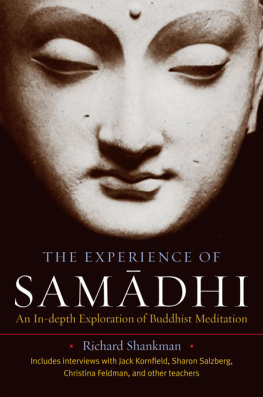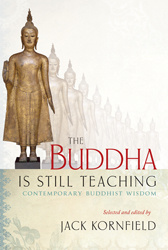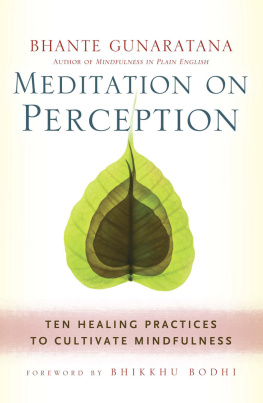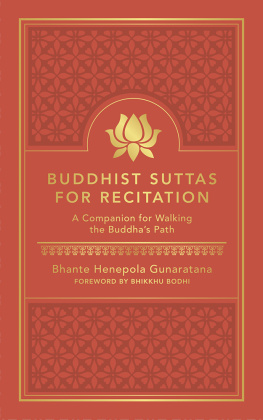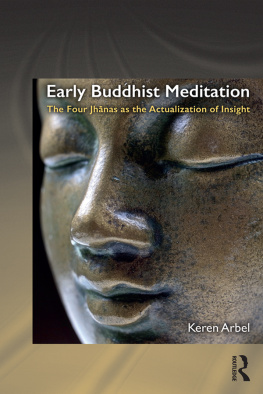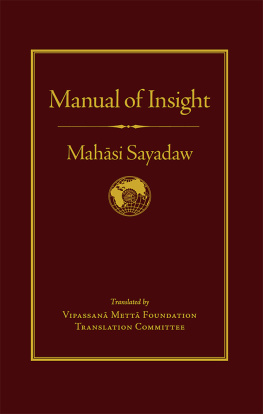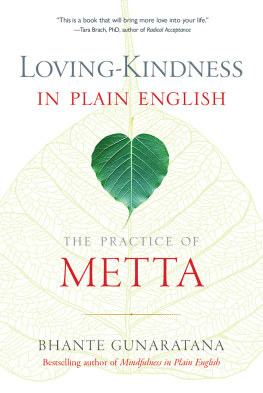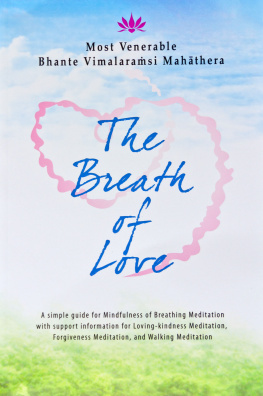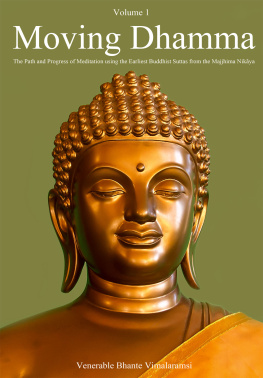A balanced, intelligent, and indispensable guide to the range of Buddhist teachings on samadhi. Written by an accomplished meditator.
Gil Fronsdal, author and translator, The Dhammapada
The Experience of Samadhi provides a wonderfully broad overview of the role of concentration in Buddhist meditation as well as in-depth exploration of meditative experience. This book is a valuable and inspiring resource.
Joseph Goldstein, author of One Dharma and A Heart Full of Peace
This book will be strongly welcomed not only by all those who sit on the meditation cushion but also by many who want to know about the experiences of meditative concentration and unification of the mind. It will be a classic, a manual and resource book lasting for generations. This is a five-star book. Actually, six stars.
Christopher Titmuss, author of An Awakened Life
ABOUT THE BOOK
Dharma practice comprises a wide range of wise instructions and skillful means. As a result, meditators may be exposed to a diversity of approaches to the core teachings and the meditative pathand that can be confusing at times. In this clear and accessible exploration, Dharma teacher and longtime meditator Richard Shankman unravels the mix of differing, sometimes conflicting, views and traditional teachings on how samadhi (concentration) is understood and taught.
In part one, Richard Shankman explores the range of teachings and views about samadhi in the Theravada Pali tradition, examines different approaches, and considers how they can inform and enrich our meditation practice.
Part two consists of a series of interviews with prominent contemporary Theravada and Vipassana (Insight) Buddhist teachers. These discussions focus on the practical experience of samadhi, bringing the theoretical to life and offering a range of applications of the different meditation techniques.
RICHARD SHANKMAN is a Buddhist meditation teacher with nearly four decades experience in meditation practice and study. He is cofounder of the Sati Center for Buddhist Studies as well as the Community Partnership for Mindfulness in Education. He teaches throughout the country at Dharma centers and retreats, including Spirit Rock Meditation Center.
Sign up to learn more about our books and receive special offers from Shambhala Publications.

Or visit us online to sign up at shambhala.com/eshambhala.
THE EXPERIENCE OF
SAMDHI

An In-depth Exploration of Buddhist Meditation

Richard Shankman

SHAMBHALA
Boston & London
2012
Shambhala Publications, Inc.
Horticultural Hall
300 Massachusetts Avenue
Boston, Massachusetts 02115
www.shambhala.com
2008 by Richard Shankman
Cover art: Buddha head, Gandhra, Kabul Valley, circa 4th century
Cover design by Gopa & Ted2, Inc.
for a continuation of the copyright page.
All rights reserved. No part of this book may be reproduced in any form or by any means, electronic or mechanical, including photocopying, recording, or by any information storage and retrieval system, without permission in writing from the publisher.
Library of Congress Cataloging-in-Publication Data
Shankman, Richard.
The experience of samadhi: an in-depth exploration of Buddhist meditation / Richard Shankman.1st ed.
p. cm.
Includes bibliographical references and index.
eISBN 978-0-8348-2401-0
ISBN 978-1-59030-521-8 (pbk.: alk. paper)
1. Samadhi. 2. Buddhist literature, PaliHistory and criticism. 3. BuddhistsInterviews. I. Title.
BQ5630.S16S43 2008
294.34435dc22
2008017613
CONTENTS


This book contains Sanskrit diacritics and special characters. If you encounter difficulty displaying these characters, please set your e-reader device to publisher defaults (if available) or to an alternate font.
The idea and motivation for writing this book has evolved ever since first beginning meditation in 1970. Since then I have been fortunate to have studied and practiced with a number of teachers, each of them offering their own understanding and perspective of the Dharma and of meditation practice. Dharma practice comprises a wide range of wise instructions and skillful means, and each teacher will offer guidance based on his or her own understanding and experience. The resulting diversity of approaches to conveying the core teachings and the meditative path can be confusing, and there seemed a need to try to unravel the mix of conflicting views and styles of meditation.
Much of what is written and taught by contemporary meditation teachers is heavily influenced by the Pli commentaries, which represent the understanding and interpretation of the Pli suttas that existed sometime around the first century C.E. The commentaries evolved in the early centuries after the Buddhas passing and may not necessarily reflect how the teachings were understood in the early years. This is an area of great disagreement and debate.
Samdhi holds an important place in many Buddhist traditions. In order to understand the range of views and opinions on the subject, which exist even within individual Buddhist traditions, one currently has to study many sources, including the Pli suttas and other foundational sources such as the Visuddhimagga, an extremely influential treatise written in the commentarial tradition.
This book differs from most books on samdhi in that it is not presenting teachings from only one teacher or perspective. Rather, the intent is to provide an in-depth, broad, and thorough examination of various foundational texts, interpretations of the texts, and teachings on samdhi, and then discuss some of the controversies, disagreements, and views on the topic. Clearly, there are plenty of areas in the suttas that can be interpreted in more than one way. Anyone engaging in a project of this sort will inevitably bring his or her own perspectives and views to the project. I try to be careful not to say that any particular interpretation is the right one, but rather to present the material in a way that is as unbiased as possible and then examine various interpretations.
Part 1 of this book examines in detail samdhi as presented in the Pli suttas, without regard to the commentaries. Next samdhi is presented separately from the perspective of the Visuddhimagga, without consideration of what is in the suttas, so that the material can be viewed on its own. The two texts are then compared in a section discussing controversies surrounding these topics, such as what is jhna; are there two paths of practicetranquillity and insightor one path that synthesizes the two; and is jhna necessary for liberating insight.
In a few places bold text is used to highlight certain words or phrases that are of particular relevance within a quoted passage to the topic being discussed.
Part 2 of the book consists of interviews with well-known meditation teachers. Once readers understand the texts and range of understandings, they can see how and where each teacher falls within the overall landscape of teachings on the topic.
This book is targeted toward the general readermeditators, of course, but anyone wishing to understand the range of teachings and mix of ideas on this topic so central to meditation practice. One of the challenges with a project of this nature is to delve thoroughly into the material without creating an overly academic or scholarly work, making it accessible to the general reader who might have only a basic exposure to Dharma teachings while still providing a comprehensive presentation of the material. I hope both purposes have been served.
Next page
